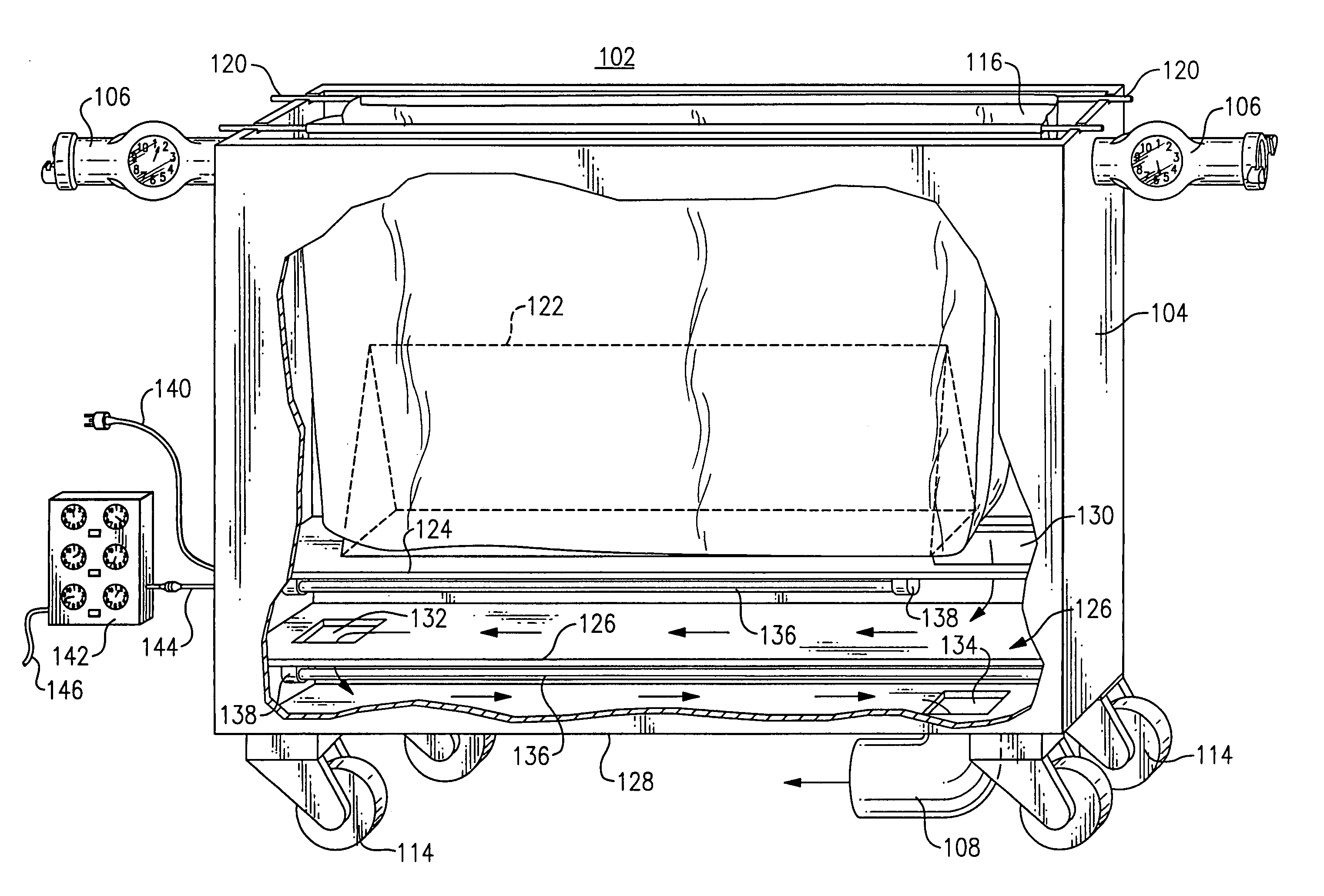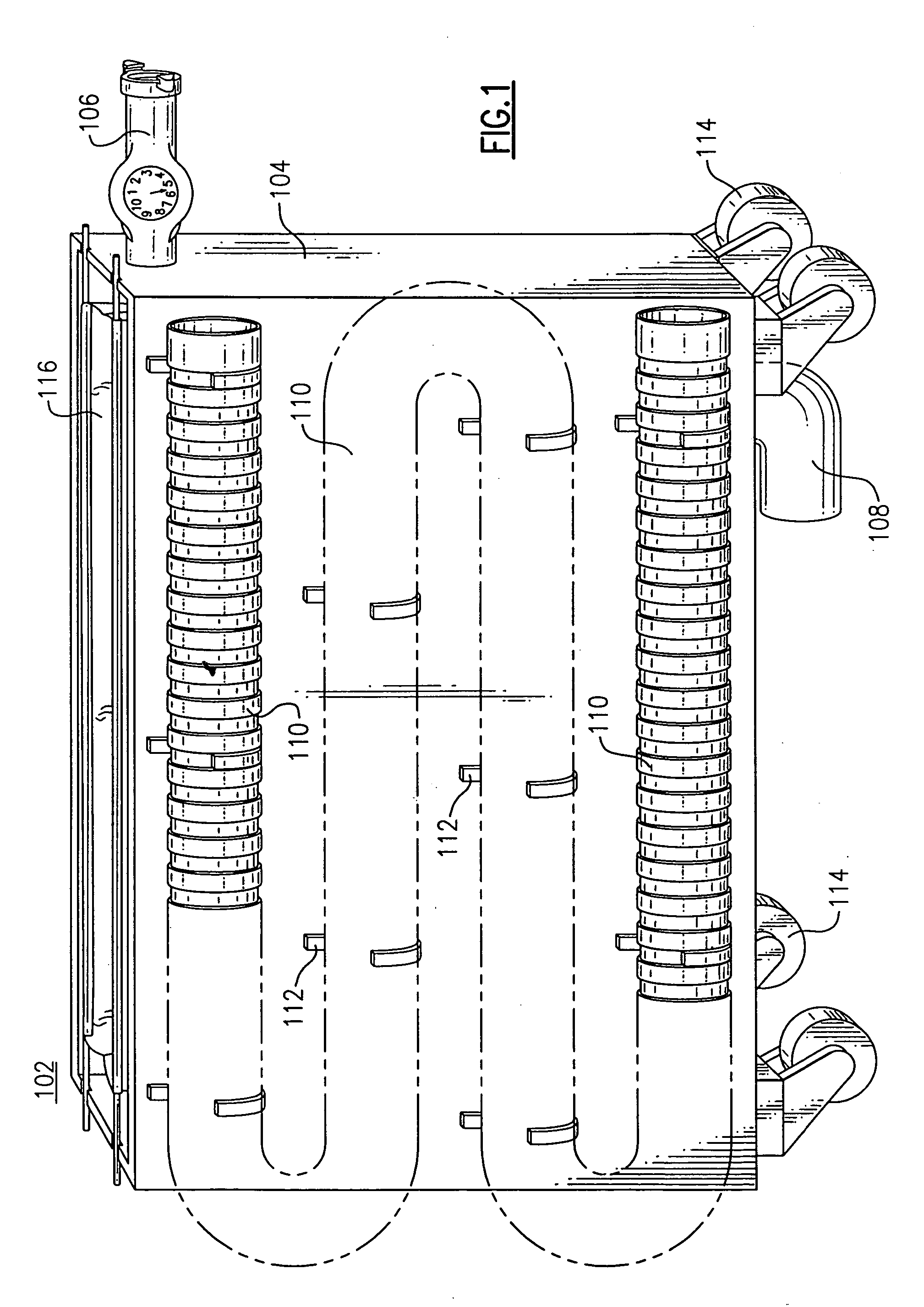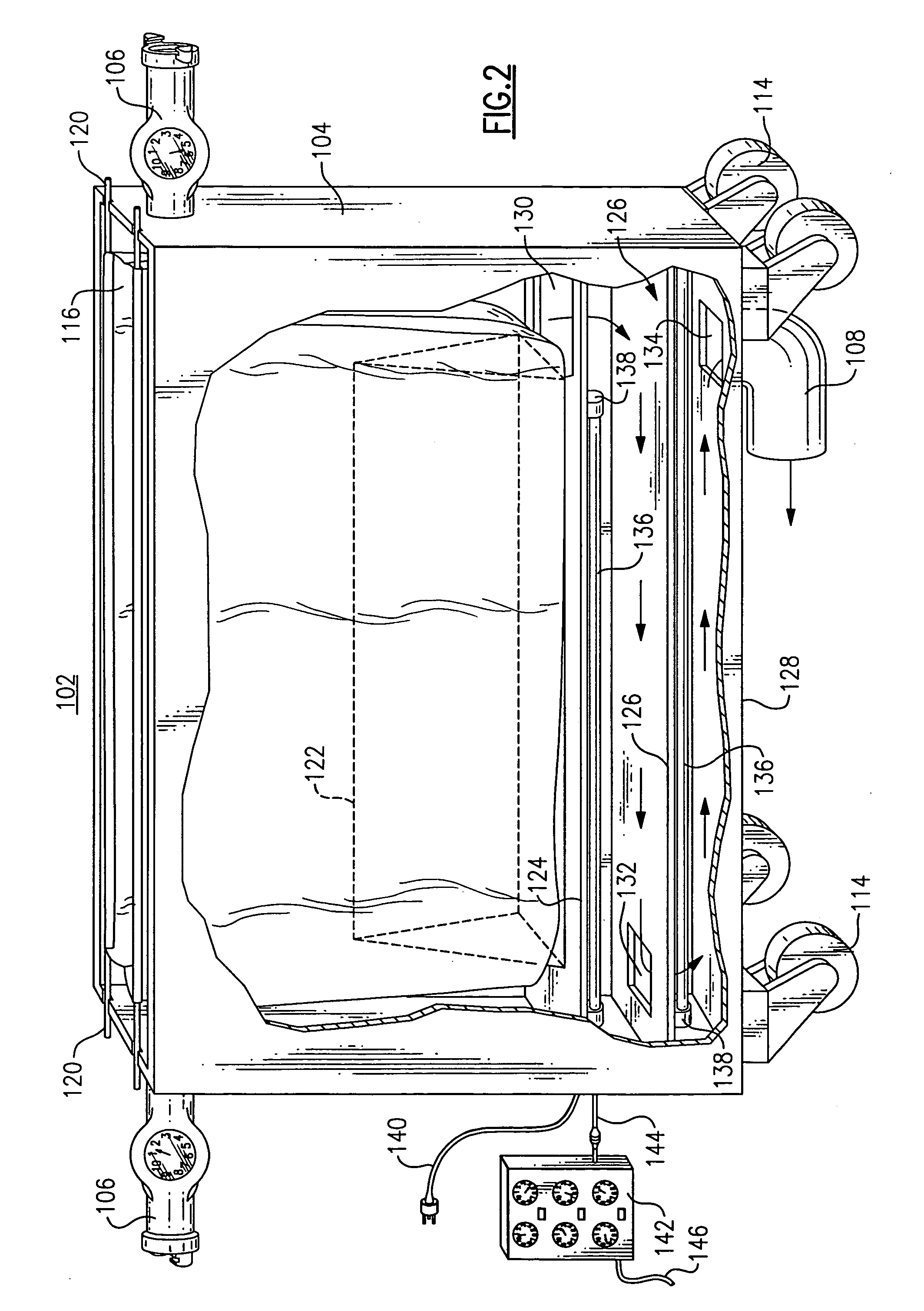Ballast water treatment systems including related apparatus and methods
a ballast water treatment and related technology, applied in the field of ballast water treatment for ships, can solve the problems of destroying native species as well as disrupting local marine ecosystems, causing human health problems, and achieving cost-effective effects
- Summary
- Abstract
- Description
- Claims
- Application Information
AI Technical Summary
Benefits of technology
Problems solved by technology
Method used
Image
Examples
Embodiment Construction
[0064] With reference to FIG. 1, there is shown a ballast water treatment apparatus or device 102 according to the present invention. The ballast water treatment apparatus 102 includes a tank housing 104 as illustrated. The housing 104 includes an inlet port 106 having a gallon metered device as shown. The housing 104 further includes a discharge port 108. In the embodiment illustrated in FIG. 1, the housing member 104 is further provided with a discharge hose 110 mounted thereon by use of hook brackets 112. During use of the ballast water treatment apparatus 102 as described in further detail below, the discharge hose 110 is connected to the discharge port 108. With continuing reference to FIG. 1, there is further shown transport wheels 114 integrally arranged with the housing member 104 to thereby provide mobility during use of the apparatus on a ship's deck. As also shown in FIG. 1, the housing member 104 is provided with a filter apparatus which is discussed in further detail in...
PUM
| Property | Measurement | Unit |
|---|---|---|
| operating voltage | aaaaa | aaaaa |
| temperature | aaaaa | aaaaa |
| temperature | aaaaa | aaaaa |
Abstract
Description
Claims
Application Information
 Login to View More
Login to View More - R&D
- Intellectual Property
- Life Sciences
- Materials
- Tech Scout
- Unparalleled Data Quality
- Higher Quality Content
- 60% Fewer Hallucinations
Browse by: Latest US Patents, China's latest patents, Technical Efficacy Thesaurus, Application Domain, Technology Topic, Popular Technical Reports.
© 2025 PatSnap. All rights reserved.Legal|Privacy policy|Modern Slavery Act Transparency Statement|Sitemap|About US| Contact US: help@patsnap.com



